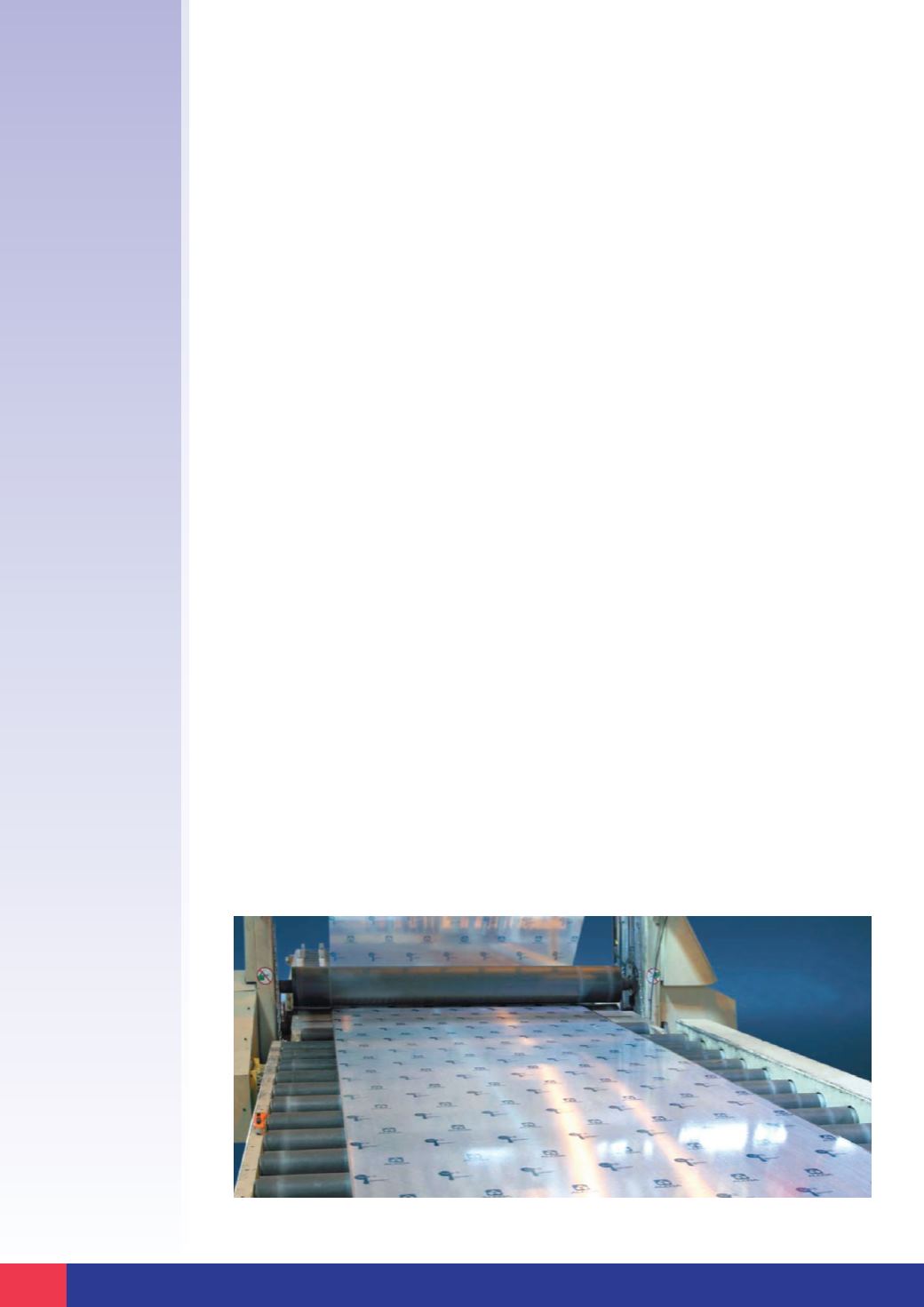
Working with MIC6
®
Anodising
MIC6
®
has been satisfactorily anodised for thousands of end uses, providing good performance and a
uniform coating depth across the entire surface with either conventional or hard coat anodising
treatments. Both are applied after the machining routine for improved corrosion protection, wear
resistance and/or as a colour enhancement.
A non-etching type cleaner is recommended. Strong caustic based or aggressive cleaners that etch tend
to preferentially attack the cast grain structure and thereby overly roughen the surface. With a non-
etching cleaner, the smooth machined surface is better maintained for the subsequent anodise.
A natural, darker grey colour occurs as a result of anodising. Since MIC6
®
is a casting, variations in the
shade and texture of the gray appearance can occur within a given plate or from plate to plate. However,
when typical applications involve only one piece of MIC6
®
, any piece to piece variation is not of concern.
When a black dye treatment has been used, the colour developed has been a deep black tone, satisfying the
requirements of most end users. This colour tone has proven consistent from piece to piece and lot to lot.
For conventional anodising, a 15% by weight sulphuric acid solution, current density of 12 amps per
square foot (1.2 A/dm
2
) and a bath temperature of 70 to 90°F (20 to 32°C) is suggested. Once the
anodising has been completed, the surfaces should be rinsed - when organic dyes are used, good rinsing
practices become critical. If all the sulphuric acid from the anodising bath is not rinsed prior to the dye
treatment, white spots can occur. Although these occurrences are rare, a neutralising solution of 5%
ammonium oxalate or sodium bicarbonate applied for 5 to 10 minutes has proven effective in their
elimination. If sulphuric acid from the anodising bath becomes entrapped in any voids, it can bleed after
the dye treatment and oxidise the dye, causing a lighter colour spot.
For hard coat anodising, a variety of proprietary processes are in use. In general, the bath operating
temperatures are 32 to 50°F (0 to 10°C), and the current densities are 20 to 36 amps per square foot
(2.0 to 3.6 A/dm
2
). The combination of the lower bath temperature and the higher current density
produces a thicker coating that has improved wear resistance. Excessive operating temperatures should
be avoided when conducting these hard coat anodised treatments as they can affect the quality and
thickness of the coating. It is suggested that a test piece be evaluated when considering a given hard
coat process.
18
s . com


